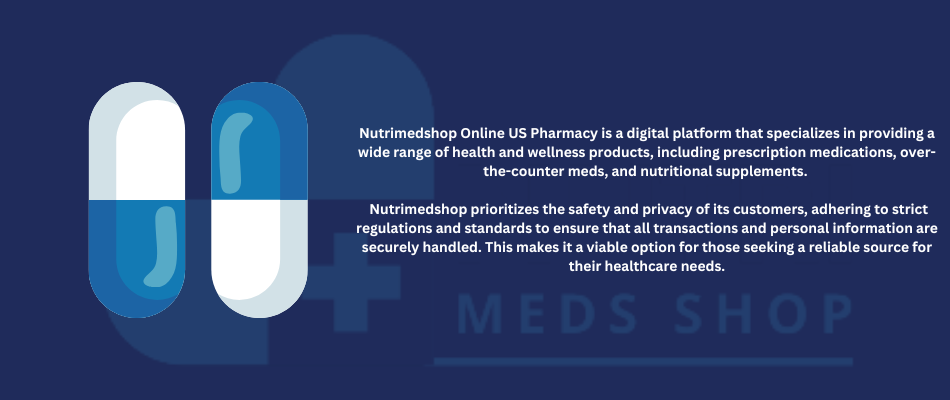- enquiry@nutrimedshop.com
- +1 848-480-6007
- Adderall
- Adipex
- Alprazolam
- Ambien
- Ativan
- Carisoprodol
- Clonazepam
- Codeine
- Darvocet
- Demerol
- Diazepam
- Dilaudid
- Fioricet
- Hydrocodone
- Hydromorphone
- Lorazepam
- Lorcet
- Lortab
- Meridia
- Methadone
- Norco
- Opana ER
- Oxycodone
- Oxycontin
- Percocet
- Phentermine
- Roxicodone
- Soma
- Suboxone
- Subutex
- Tramadol
- Valium
- Viagra
- Vicodin
- Xanax
- Klonopin
- Cialis
Xanax Category
Xanax 1mg
$299 - $1099
Xanax 2mg
$425 - $1355
Xanax 0.5mg
$249 - $749
Xanax 0.25mg
$239 - $749
Green Xanax Bars
$425 - $1355
Blue Xanax Bar
$401 - $1201
Red Xanax Bar
$425 - $1355
Xanax XR 3mg
$425 - $1355
Yellow Xanax
$425 - $1355
Category Description
Buy Xanax online from trusted pharmacies that offer overnight delivery. This ensures fast and safe arrival of medication at the best prices, while guaranteeing authenticity and quality. Our platform offers a seamless shopping experience, ensuring that you receive your prescribed medication promptly and hassle-free.
What is Xanax?
Xanax is the brand name for alprazolam, a prescription medication that belongs to a class of drugs called benzodiazepines. It is used to treat anxiety disorders, panic disorders, and anxiety caused by depression.
The generic version of Xanax, alprazolam, is available from several manufacturers. Brand name Xanax is produced by Pfizer. Alprazolam comes in immediate release and extended release oral tablet forms, as well as a solution for oral administration. It is a controlled substance, classified as a Schedule IV drug.
How does Xanax work?
- Xanax is a benzodiazepine drug that works by enhancing the effects of the neurotransmitter gamma-aminobutyric acid (GABA) in the brain. GABA is responsible for reducing neuronal excitability and activity. When GABA levels are increased by Xanax, it brings about a drowsy or calming effect.
- Specifically, Xanax binds to benzodiazepine receptors that are part of the GABA-A receptor complex. This causes the GABA-A receptor to open up chloride channels, allowing more chloride ions to flow into the neuron. The increased chloride ions cause the neuron to become more negatively charged, leading to hyperpolarization and reduced excitability.
Side Effects
Common side effects of Xanax include:
- Drowsiness
- Dizziness
- Weakness
- Slurred speech
- Lack of coordination
- Memory problems
- Constipation
- Nausea
- Changes in sex drive
More serious side effects may include:
- Depression
- Suicidal thoughts
- Seizures
- Respiratory depression
- Vision problems
- Jaundice
- Low blood pressure
- Heart problems
- Difficulty urinating
Long-term use of Xanax can lead to:
- Dependence and addiction
- Tolerance, meaning that greater dosages are needed to have the same result
- Severe withdrawal symptoms if stopped suddenly
- Impaired thinking and cognition
- Personality changes
- Decreased motivation
- Problems with movement and balance
It’s important to be aware of the potential side effects of Xanax, especially the risks with long-term use. Speak with your doctor if you experience any troublesome or serious side effects.
Warnings and Precautions
Xanax has a high potential for abuse and addiction. Prolonged use can lead to physical dependence, even when taken as prescribed. When Xanax is stopped suddenly after regular usage, withdrawal symptoms may occur.
Addiction and Abuse
Like other benzodiazepines, Xanax acts on the brain’s GABA receptors, producing a calming effect. This can lead to euphoria or a “high” feeling at higher doses. Some people misuse Xanax to self-medicate or get high. This increases the risk of addiction, especially with prolonged use.
Overdose
Overdose can occur if someone takes too much Xanax at once, often in combination with other central nervous system depressants like alcohol or opioids. An overdose can be fatal due to suppressed breathing. Signs include extreme drowsiness, confusion, impaired coordination, and difficulty breathing. Seek emergency help immediately if an overdose is suspected.
Withdrawals
When someone dependent on Xanax stops suddenly, they may experience withdrawal symptoms like anxiety, insomnia, tremors, nausea, headaches, and seizures. Withdrawal can be life-threatening. Do not stop Xanax abruptly without medical supervision. Tapering off slowly under a doctor’s care can help avoid or minimize withdrawal symptoms.
Risk Factors
There are several risk factors that can increase a person’s chance of developing an addiction to Xanax:
- Having a history of substance abuse or addiction
- Taking higher doses of Xanax than prescribed
- Using Xanax in combination with alcohol or opioids
- Having underlying mental health conditions like depression, anxiety, or trauma
- Using Xanax to cope with stress rather than for its intended medical purpose
Seeking Treatment
The main components of treatment include:
- Safe medication weaning via medical supervision during detoxification
- Behavioral treatments such as contingency management and cognitive behavioral therapy (CBT)
- Narcotics Anonymous (NA) and SMART Recovery are examples of support groups
- Addressing any co-occurring mental health disorders
Xanax During Pregnancy and Breastfeeding
Xanax can cross the placenta and enter breast milk, so caution should be used when taking Xanax during pregnancy and breastfeeding.
Effects on the fetus
Taking Xanax during pregnancy may increase the risk of birth defects. Studies have found an association between taking benzodiazepines like Xanax during the first trimester and an increased risk of cleft lip and cleft palate in newborns. Xanax use later in pregnancy may cause floppy infant syndrome, with symptoms like lethargy, difficulty feeding, and low muscle tone in the newborn.
Xanax use during pregnancy has also been associated with preterm birth and low birth weight. Babies exposed to Xanax in utero can experience withdrawal symptoms after birth, including tremors, restlessness, excessive crying, and trouble sleeping. Symptoms usually appear within 1-3 days after birth.
Effects on the newborn
Xanax can pass into breast milk and negatively impact a breastfeeding infant. Reported effects include sedation, poor sucking, and weight loss. The American Academy of Pediatrics recommends that mothers taking benzodiazepines like Xanax avoid breastfeeding if possible. If breastfeeding is continued, the infant should be monitored for symptoms like sedation and adequate growth. Mothers are advised to take the lowest effective dose of Xanax and watch for any side effects in the breastfed baby.
Therapy
Cognitive behavioral therapy (CBT) is an effective form of talk therapy for treating anxiety disorders. It focuses on changing negative thought patterns that fuel anxiety. Other therapeutic options include mindfulness techniques, meditation, and joining an anxiety support group.


